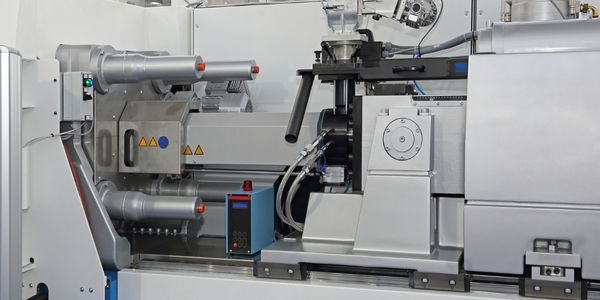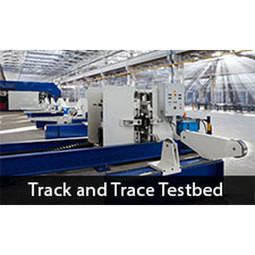下载PDF
the HTI Group at the Peak of Hyperconvergence with HPE Simplivity
技术
- 基础设施即服务 (IaaS) - 云计算
- 基础设施即服务 (IaaS) - 云存储服务
适用功能
- 离散制造
- 商业运营
用例
- 自动化制造系统
- 资产生命周期管理
服务
- 云规划/设计/实施服务
- 系统集成
挑战
High Technology Industries (HTI) needed a modern and homogeneous IT infrastructure in order to standardise the systems of the group companies in the different countries. The infrastructure was both to meet the business needs of the next few years and to conform to the enhanced data privacy requirements. The various businesses had already come to the realisation that their rapid growth and geographical distances had created huge differences between the individual IT infrastructures in place at the miscellaneous IT locations of the group. This was presenting an obstacle to internal collaboration, since projects are delivered by the group across sites and a full range of winter sports technologies is covered.
关于客户
The High Technology Industries (HTI) group includes LEITNER ropeways and POMA with cable-hauled transportation systems, AGUDIO for material transport; PRINOTH snow groomers and tracked utility vehicles; Minimetro urban transport systems; LEITWIND wind turbines; and DEMACLENKO snow making systems. The group is one of the world’s leading companies in the cable-hauled transportation system industry, its core business, alongside snow-grooming and snow making systems. The company was founded by the mechanic Gabriel Leitner, from Vipiteno, South Tyrol, who opened a workshop specialising in farm machinery, ropeways for material transportation and waterwheels in Vipiteno in 1888. With winter sports tourism growing after the Second World War, the company started to develop cableway systems for passengers. In 1970 snow groomers began to be manufactured instead of agricultural machinery. The 1990s saw the first subsidiaries established abroad. The export ratio is now almost 90%. The company’s headquarters in Vipiteno (BZ), Italy, is not only where the management is based, but also a production facility. Other production sites are located in France, Austria, USA, Canada, India, China, Slovakia and Germany. Customer service and sales across the world are guaranteed by a network of 65 branches and 132 sales and service centres. Turnover in 2018 came to 1.21 billion euros. Particular importance is attached to investment, which in 2018 reached 49.2 million euros (including spending on research & development, new buildings and production equipment). With its pooled competence between LEITNER ropeways/POMA, PRINOTH and DEMACLENKO, the group has been the world’s only all-round provider of winter sports technologies since 2011. That means customers benefit from the know-how and expertise of the specialists in ropeways systems, snow groomers and snow making system in one place.
解决方案
In the course of 2018 the IT team at HTI under Claudio Borri, Head of IT Infrastructure and Help Desk at the Vipiteno hub, began to plan the enhancement of the IT infrastructure. They needed to find a solution that would meet the business requirements of the next five years while at the same time offering simplicity, data security and the right price/performance ratio. Information Consulting then developed a spectrum of technology solutions, some of which were more traditional, others software defined, and still others hyperconvergent. Once the team from HTI had screened a variety of solutions, they decided to consult the other companies in the group. As it turned out, the various businesses had already come to the realisation that their rapid growth and geographical distances had created huge differences between the individual IT infrastructures in place at the miscellaneous IT locations of the group. This was presenting an obstacle to internal collaboration, since projects are delivered by the group across sites and a full range of winter sports technologies is covered. With a preference for the hyperconvergent solutions having crystallised, the company’s IT team requested a specific quotation based on HPE SimpliVity. The specialists at HPE then got together with the IT teams of the various IT locations of the group on the company’s premises in order to explore the possibilities offered by the SimpliVity infrastructure in detail, extending from differentiation vis-à-vis other hyperconvergent solutions on the market to better management, data protection, efficiency, scalability and performance of the workload.
运营影响
数量效益
相关案例.

Case Study
Plastic Spoons Case study: Injection Moulding
In order to meet customer expectations by supplying a wide variety of packaging units, from 36 to 1000 spoons per package, a new production and packaging line needed to be built. DeSter wanted to achieve higher production capacity, lower cycle time and a high degree of operator friendliness with this new production line.

Case Study
Robot Saves Money and Time for US Custom Molding Company
Injection Technology (Itech) is a custom molder for a variety of clients that require precision plastic parts for such products as electric meter covers, dental appliance cases and spools. With 95 employees operating 23 molding machines in a 30,000 square foot plant, Itech wanted to reduce man hours and increase efficiency.

Case Study
Fully Automated Visual Inspection System
Tofflon has developed a fully automatic machine that uses light to inspect vials, medicine bottles, or infusion containers for glass fragments, aluminum particles, rubber grains, hairs, fibers, or other contaminants. It also detects damaged containers with cracks or inclusions (microscopic imperfections), automatically removing faulty or contaminated products. In order to cover all production processes for freeze-dried pharmaceuticals, Tofflon needed to create an open, consistent, and module-based automation concept.

Case Study
SAP Leonardo Enabling Rocket Science
At times, ULA has as many as 15 different operating systems dedicated to overlapping processes, such as rocket design, testing, and launch. Multiple systems created unnecessary costs and unwanted confusion among workers at offices, factories, and launch sites in different location. In order to improve collaboration and transparency during vital activities that directly influence mission success, ULA wanted to improve data sharing and streamline manufacturing processes.

Case Study
IIC - Track and Trace Testbed
Factory systems can detect - within a meter - the location of a tool; Misuse of tools can result in serious accident or injury; The production of many industrial and consumer goods requires exacting work - down to the precise force used to tighten a screw. GOAL Manage smart, hand-held tools in manufacturing, maintenance, and industrial environments




---nyse--hpe_1.jpg)

